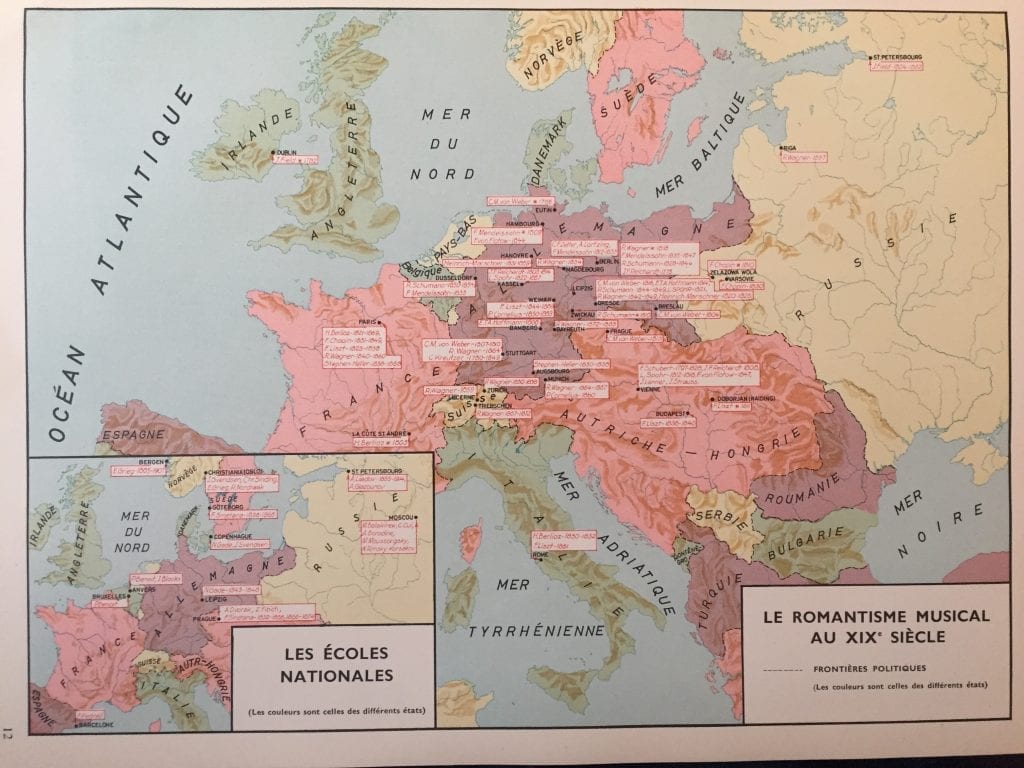Over the last week, we have been looking at different maps made for humanistic studies, including those designed for musicological usage. The map below comes from the Atlas Historique de la Musique, a collection of various earliest maps illustrating the subjects concerned with the study of musicology.

Information contained in the map delivers the authors’ attention to create a map that is both spacial and temporal, and potentially analytical, which is valuable yet problematic. In this map, the author located the geographical spread of major European composers’ musical activities in the Romantic period through visualizing when and where the composers had traveled to. The unsuccessful visualization of the map is quite perceivable: lack of layers, indistinguishable texts, etc. These problems can be easily fixed by modern technology, as it will be demonstrated in the later paragraph.
The more complicated issue with this map is the separate map of a smaller scale entitled “The National Schools” in the bottom left corner, which demonstrates the geographical spread of the group of contemporary composers who presumably had special national identities in their music. Regardless how confusing such categorization is, what is helpful to our own map making project is to understand the necessity of using prose to accompany the map in many cases.
In comparison, digital tool enables us to create more effective visualization that is user friendly in a way as simple as a click on the mouse. The sequential colored labels illustrate each composers’ traveling route; the pop-ups present clear categorization of different types of information. To this extent – although it is probably unfair to compare our production with one from more than half a century ago – our digital mapping of composers’ travel is incomparably more efficient than the traditional paper map.
However, here comes the issue that scholars have discussed in their writings, that digital maps for humanistic studies go beyond some alternative form of factual database, but engage the critical, analytical and narrative humanistic features.1 In this sense our map is still in the premature stage. We need to conduct more professional research than referring to Grove in order to use maps to ask ourselves good questions, while inspire others to do so as well.
1 See more on: Bethany Nowviskie, “How to Play with Maps,” in Cultural Mapping and the Digital Sphere: Place and Space, ed. Ruth Panofsky and Kathleen Kellett (Edmonton: University of Alberta Press, 2015), 107-127.
You must be logged in to post a comment.